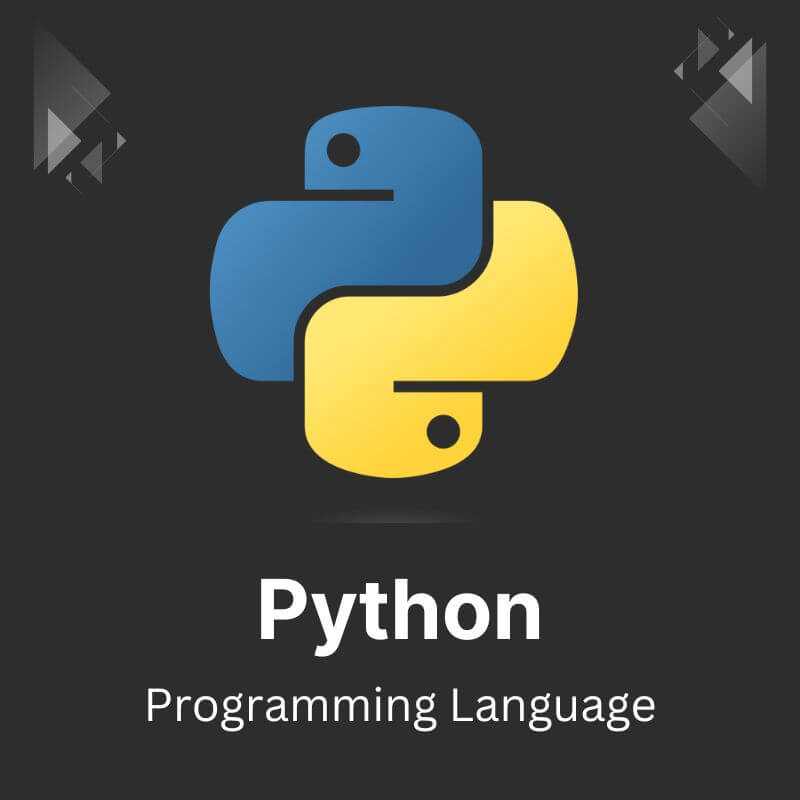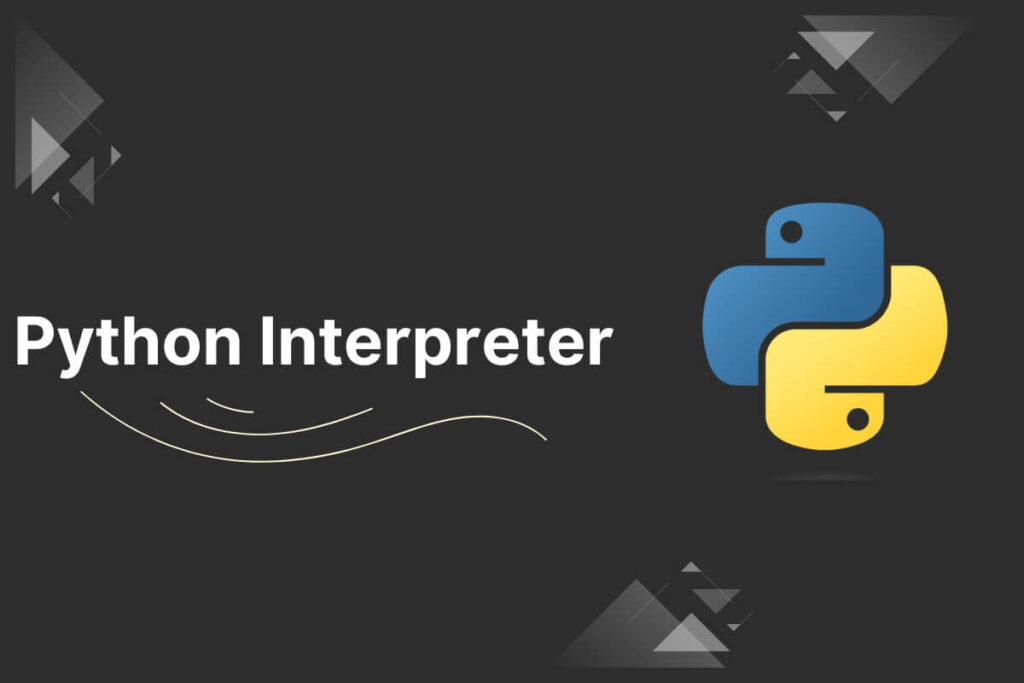Have you ever typed a line of Python code and marveled at how it magically transforms into working software? This mysterious transformation happens thanks to the unsung hero – the Python interpreter. But what exactly is it, and how does it work?
In this blog, we’ll pull back the curtain and unveil the secrets of the Python interpreter. Whether you’re a curious beginner or a seasoned programmer, you’ll discover valuable insights into how Python code comes to life. So, buckle up and get ready to dive into the exciting world of Python execution!
Take a look at all the topics that are discussed in this article:
Python Interpreter - Interactive Mode
In interactive mode, the Python interpreter allows you to enter commands and expressions directly and see the results immediately. When you run the Python interpreter in interactive mode, it follows a process to execute your input.
Some key points about the Python interactive interpreter:
- It reads a Python statement or expression, parses it, compiles it to bytecode, and then immediately executes it. This repeats in a loop until you exit the interpreter.
- The interpreter provides a prompt (>>> by default) indicating it is ready for you to enter the code. You can then type a statement or expression.
- After hitting enter, the interpreter evaluates what you typed and prints the result. If it’s an expression, the interpreter prints the value. For statements, it executes them.
- The interpreter remembers the state across statements and expressions. This includes declared variables, imported modules/functions, etc.
- Using the interactive interpreter is useful for testing out the syntax, doing quick experiments with code snippets, or just a handy Python shell.
Here is a simple example of Python code in the interactive interpreter:
>>> x = 5
>>> print(x)
5
>>> y = x + 3
>>> print(y)
8
>>> import math
>>> math.sqrt(y)
2.8284271247461903
>>> exit()
This shows declaring variables, printing, importing a module, calling functions, and exiting the interpreter. The key benefit is getting immediate feedback as you enter statements.
To exit the interactive mode, you can type exit() or use the keyboard shortcut (e.g., Ctrl+D).
Python Interpreter - Scripted Mode
In scripted mode, the Python interpreter executes Python scripts, which are files containing Python code. The interpreter reads the script line by line and executes the instructions sequentially.
Here’s a brief overview of how the Python interpreter works in scripted mode:
1. Source Code: You write Python code in a text file with a .py extension. This file is known as a script.
2. Interpreter Invocation: To run the script, you use the Python interpreter, typically by executing the following command in the terminal or command prompt:
python script.py
Here, script.py is the name of your Python script.
3. Tokenization: The Python interpreter first tokenizes the source code. Tokenization involves breaking down the code into smaller units called tokens. Tokens can be keywords, identifiers, operators, etc.
4. Parsing: The interpreter then parses the tokens to create a syntax tree. The syntax tree represents the structure of the code according to the Python grammar rules.
5. Compilation: The interpreter compiles the syntax tree into an intermediate bytecode. This bytecode is a low-level representation of the code that can be executed by the Python Virtual Machine (PVM).
6. Execution: The PVM executes the bytecode, carrying out the instructions specified in the original Python script.
Here’s a simple example to illustrate the process. Consider a Python script named hello.py with the following code:
# hello.py
def greet(name):
print("Hello, " + name + "!")
# Main program
user_name = input("Enter your name: ")
greet(user_name)
When you run this script using the Python interpreter:
python hello.py
The interpreter reads the source code, tokenizes it, parses it into a syntax tree, compiles it into bytecode, and finally, executes the bytecode. In this specific example, the script prompts the user to enter their name, and then it prints a greeting using the greet function defined in the script.
Advantages of using an Interpreter
Here are some of the main advantages of using an interpreter:
- No separate compilation step: Interpreted code can directly run line by line without a separate compilation step. This allows for faster testing and debugging.
- Cross-platform portability: Bytecode compiled by the interpreter is portable across platforms. The same code can run on different operating systems without recompilation.
- Immediate feedback: The line-by-line analysis provides immediate feedback if any statements have errors. This aids in interactively debugging code fragments.
- Easier debugging: As execution is sequential line by line, it is easier to halt execution, print intermediate values, and debug interpretable languages.
- Dynamic typing flexibility: The runtime environment allows for dynamically typed languages like Python with flexible variables. New code can be tested quickly without strict typing.
- Interactive experimentation: The prompt in interactive mode allows dynamic testing syntax, modules, or APIs providing instant results and feedback.
- No need to manage binaries: Unlike compiled binaries, the code itself is platform-independent and there is no need to port or compile to target systems.
- Interpreted languages are typically easier to learn and code in for beginner or intermediate programmers compared to compiled languages.
Disadvantages of using Interpreters
Here are some key disadvantages of using interpreters:
- Slower execution speed: Interpreted code is executed line by line, requiring analyzing and translation repeatedly. This makes it significantly slower than compiled machine code.
- Worse runtime performance: The line-by-line execution cannot effectively optimize code across the whole program leading to poorer runtime efficiency.
- Larger memory footprint: Interpretive environments use more memory during execution since processes like parsing and analysis occur alongside normal execution.
- Platform dependence: Unlike standalone machine code, the interpreted code relies on the availability of the interpreter and virtual machine on target systems.
- Interpreters offer less low-level control compared to compilers. This makes interpreter languages less suitable for systems programming roles.
- Security and Obfuscation: As plain high-level source code is executed, there are more attack surfaces exposed compared to compiled binary code. Obfuscation techniques are also not applicable.
- Interpreters need to continuously analyze syntax which slows down response times for very large codebases, while compiled languages do it only once.
- Real-time and latency-sensitive systems may face issues as slower response times and inconsistent speeds make guarantees difficult.
Difference between Compilers and Interpreters
Here is a table comparing some key differences between compilers and interpreters:
| Basis | Compiler | Interpreter |
|---|---|---|
| Translation Time | Entire program is converted to machine code at once before execution. | Converts program statements one by one during execution. |
| Speed | Faster execution as entire program is already compiled to machine code. | Slower execution due to line-by-line analysis and translation. |
| Type Checking | Does type checking of entire program during compilation. Issues all errors at once. | Checks types line by line as it interprets each statement. |
| Target Code | Converts source code to target machine code. | Converts source code to intermediate bytecode that is interpreted. |
| Platform Dependence | Machine code generated is platform dependent. | Bytecode generated can run on any platform with interpreter. |
| Errors Reported | Reports all errors in one batch before allowing execution. | Allows line-by-line execution reporting errors as they happen. |
| Edit and Retry | Entire program needs recompilation after edits. | Can quickly test fixes without any recompilation. |
| Common Languages | C, C++, Go | Python, Ruby, JavaScript |
| Use Cases | Favor speed of execution. Systems programming. | Rapid testing and code changes. Scripting or web programming. |
Awesome job! You’ve now tapped into the magic of the Python interpreter. It’s time to have some fun experimenting, making things, and automating tasks like you’ve never done before!
Think of the interpreter as your interactive playground. Keep playing around, trying out its features, and building cool stuff.
But wait, there’s more to explore! The world of Python is huge and full of exciting possibilities. Dive deeper into libraries, modules, and frameworks to unlock even more of your creative potential! Keep the excitement alive and enjoy your journey into the fascinating world of Python!


